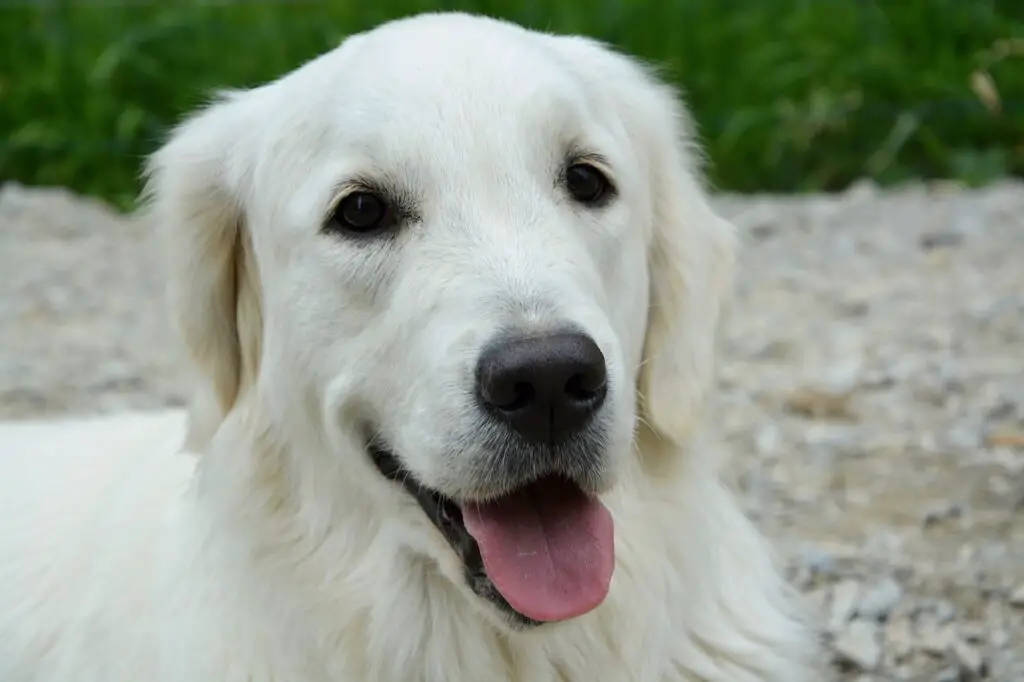When it comes to owning a female dog, understanding its reproductive cycle is an important aspect of responsible pet ownership.
One of the most significant parts of a female dog’s reproductive cycle is when they are “in heat.” But how long do dogs stay in heat?
Knowing the answer to this question is critical in keeping your dog healthy, managing their breeding, and preventing problematic behavioral changes.
In this article, we will take a closer look at the duration of a dog’s heat cycle, factors that affect the length of the cycle, signs that a dog is in heat, and tips for managing your furry friend during this time.
By understanding this essential aspect of dog ownership, you can better care for your beloved pet.
How Long Do Dogs Stay In Heat

During a dog’s heat cycle, their body prepares for breeding, and they become fertile. The length of a dog’s heat cycle can vary depending on several factors, including breed, age, and individual differences.
Generally, a heat cycle in dogs lasts between two to four weeks.
During this timeframe, it’s essential to pay close attention to a dog’s demeanor, as they may show signs of agitation or anxiety.
Additionally, keeping your dog confined or under control at all times during this time can prevent unintended breeding. Some pet owners may choose to spay their dogs, which can prevent heat cycles from occurring altogether.
Overall, understanding how long dogs stay in heat is an important aspect of responsible pet ownership. By being attentive to their behavior and taking preventative measures, you’re not only ensuring their safety and well-being, but you’re also protecting the larger dog population from accidental, unwanted breeding.
See also: Why Are My Dog’s Nipples Enlarged After Heat (Answered!)
Understanding a Dog’s Heat Cycle

Understanding a dog’s heat cycle is crucial when managing its reproductive health. A female dog’s heat cycle, also known as estrus, is a complex process that can last up to a month.
It can be broken down into four stages, each with its own characteristics and length of time. In this article, we’ll explore each stage and learn what to expect during a dog’s heat cycle.
Proestrus
The first stage of a dog’s heat cycle is called the proestrus. During this stage, a female dog’s body begins to prepare for mating.
Physical changes take places, such as swollen vulva, vaginal discharge, and a change in behavior that can range from mild to severe agitation. This stage typically lasts for around nine days but can last up to three weeks.
Estrus
Once the proestrus stage has passed, the female dog enters the next stage of their heat cycle, known as estrus. During this stage, the dog is fertile and ready to mate. Physical changes such as a reduction of vaginal discharge and swelling of the vulva occur.
A female dog in estrus may also display more sociable and affectionate behavior towards other dogs during this time. This stage typically lasts for about one to two weeks.
Diestrus
After estrus, the dog enters diestrus, a stage that occurs if fertilization and pregnancy fail to occur. During this stage, the changes that were previously present start to reverse. This stage lasts about 60 days in dogs.
Anestrus
Once diestrus is over, the dog will then enter the anestrus stage, which is the resting phase of the heat cycle.
There are no physical or behavioral changes at this stage, and the dog’s reproductive system will generally rest and become inactive. This stage lasts approximately four months.
See also: Do Dog’s Private Parts Swell Up When in Heat?
Factors That Affect The Lenght Of a Dog’s Heat Cycle
The length of a dog’s heat cycle can vary depending on several factors. Here are some of the factors that can affect the length of a dog’s heat cycle:
Breed
Different breeds of dogs can have different heat cycles. Smaller dog breeds, such as Chihuahuas, tend to have shorter heat cycles which can last for around two weeks. Larger breeds, like Great Danes, may have more extended heat cycles ranging from three to four weeks.
Age
The age of a dog can also affect the length of its heat cycle. Younger dogs may have shorter heat cycles and can go into heat for the first time as early as six months of age. Older dogs, on the other hand, may have more prolonged and irregular heat cycles as they near the end of their reproductive life cycle.
Overall Health
The overall health of a dog can also affect the length of its heat cycle. If a dog is ill or has an underlying medical condition, their heat cycle may be more prolonged or disrupted. It’s essential to prioritize your dog’s health to ensure that their heat cycle is regular and healthy.
Previous Pregnancies
A dog’s previous pregnancies can also affect the length of their heat cycle. Dogs that have been pregnant before may have more extended heat cycles and may also experience cycles that are more irregular than dogs that have never been pregnant.
See also: Why Is My Dog Spayed While In Heat Still Bleeding? (Explained!)
Signs That a Dog Is in Heat
Recognizing the signs and symptoms of a dog in heat is essential for any dog owner.
During this critical reproductive phase, their physical and behavioral changes can significantly impact their health and well-being. Here are some of the signs to watch out for:
Physical Changes
A dog in heat typically displays physical changes. These include:
- Swelling of the vulva: The vulva will become enlarged during the first stage of heat called proestrus.
- Vaginal bleeding: A bloody discharge from the dog’s vulva is a telltale sign of being in heat.
- Changes in behavior: Restlessness, anxiety, and agitation are common behavioral changes that occur during the heat.
Behavioral Changes
In addition to physical changes, dogs in heat will typically show some behavioral changes, including:
- Flirting with male dogs: When a female dog is in heat, she will flirt with male dogs by wagging her tail and inviting them to mate.
- Marking territory: A female dog in heat may mark their territory with urine and show an increased interest in marking new places.
- Excessive licking: Dogs in heat often lick their genital areas more frequently than usual.
In conclusion, being able to recognize the signs of a dog in heat is vital for any responsible pet owner. These changes in a dog’s behavior and physicality signify a significant time in its reproductive cycle, which requires attention and care.
Taking proper precautions and management measures during a dog’s heat cycle, like confining and spaying, can also lead to a safer and happier pet ownership experience.
How To Help a Dog in Heat
Dogs in heat require special care, and pet owners must understand what to do to keep their dogs comfortable and safe during this time.
Here are some tips on how to help a dog in heat:
Keep the Dog Comfortable
During the heat, dogs can experience physical discomfort. Provide your dog with comfortable bedding and keep their living spaces clean and hygienic.
You may also consider using cooling pads or fans to help regulate their body temperature.
Provide Adequate Exercise
Dogs in heat tend to have higher energy levels and need regular exercise to maintain their physical and mental well-being. Make sure to provide your dog with regular exercise, but keep them away from other dogs to avoid accidental breeding.
Prevent Unwanted Breeding
When a dog is in heat, they become extremely attractive to male dogs, and the risk of unwanted breeding increases.
If you don’t intend to use your dog for breeding, it’s essential to spay them or keep them under constant supervision to minimize the risk of unintended breeding.
Monitor their Health
During the heat cycle, monitor your dog’s physical and mental health closely. Look out for any unusual signs, such as lethargy or loss of appetite, and take them to a veterinarian immediately if you suspect any issues.
Consider Medication
In some cases, vets may prescribe medications to dogs in heat. These medications can help regulate the dog’s cycle, keep them comfortable, and prevent unwanted breeding.
However, always consult with a veterinarian before giving any medication to your furry friend.
In Conclusion
In conclusion, understanding how long dogs stay in heat is an essential aspect of responsible dog ownership, particularly for those who have female dogs.
By knowing how long this reproductive cycle lasts, pet owners can take appropriate measures to ensure the proper care and management of their pets during this time.
Factors such as breed, age, and individual differences can play a role in the length of a dog’s heat cycle, and recognizing the signs of being in heat is crucial in managing your pet’s behavior.
By following tips and preventative measures, you can take care of your dog’s health and prevent unintended breeding.
Ultimately, being an informed and attentive dog owner will help keep your pet happy, healthy, and safe.




Leave a Reply